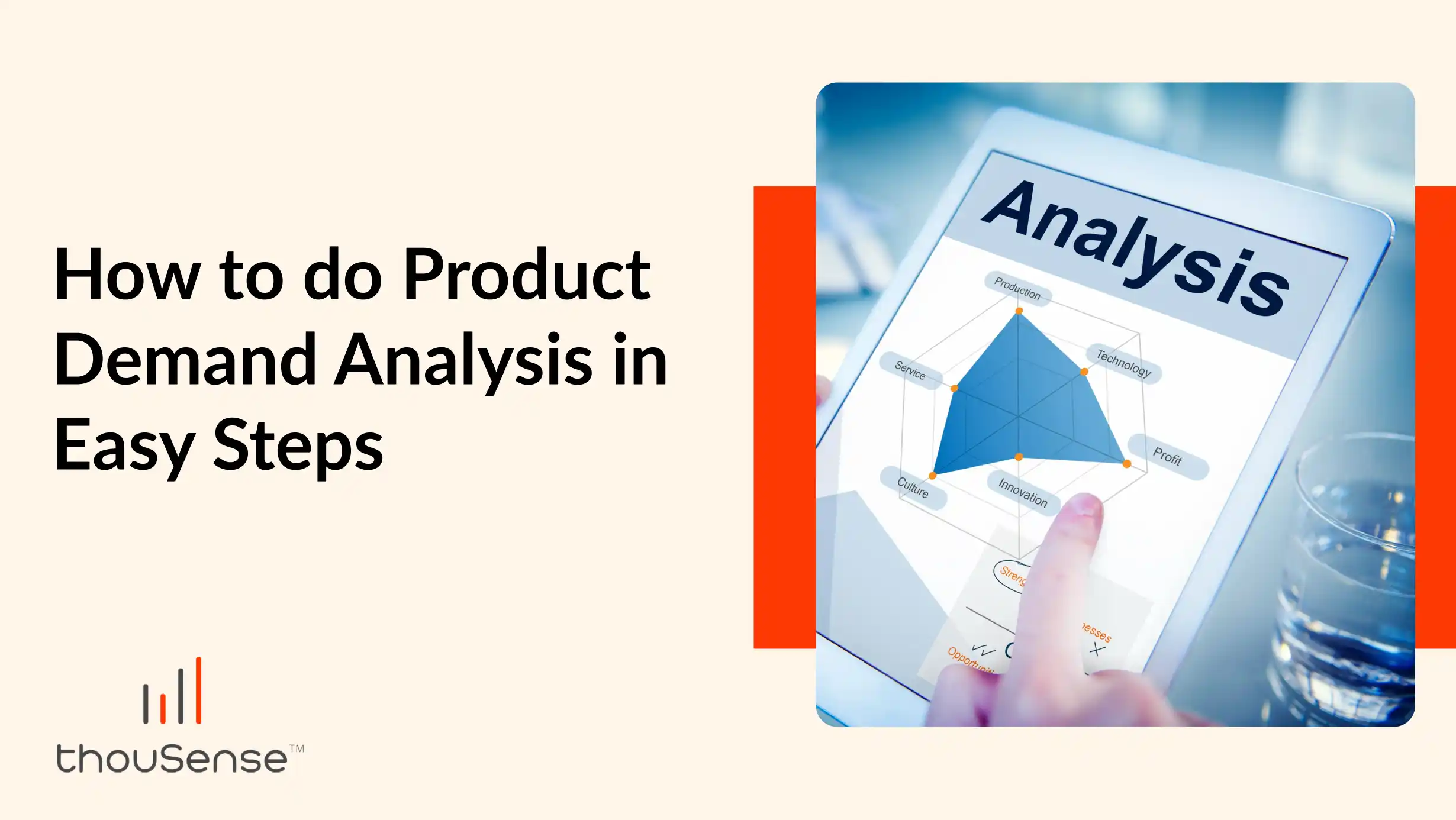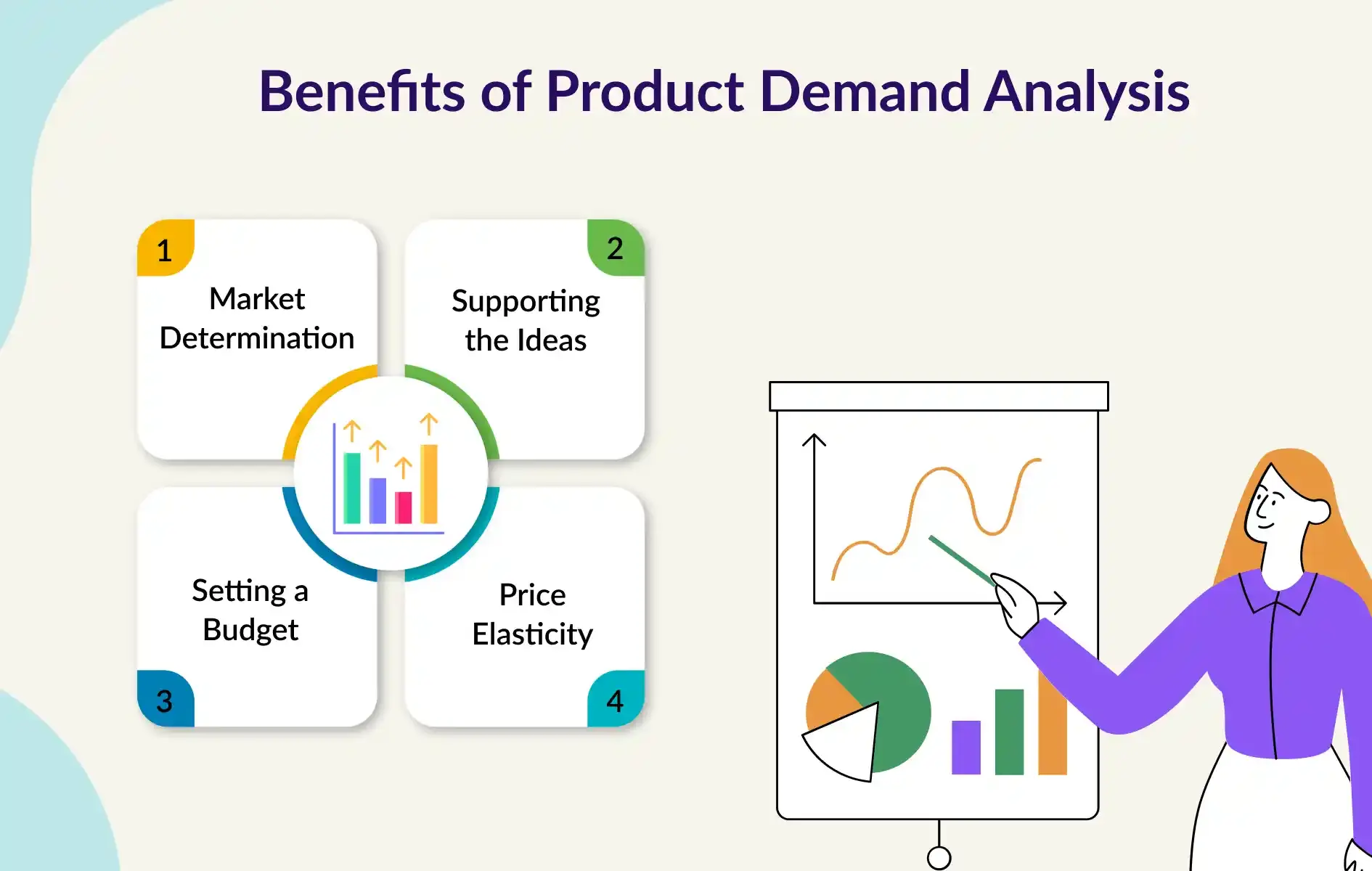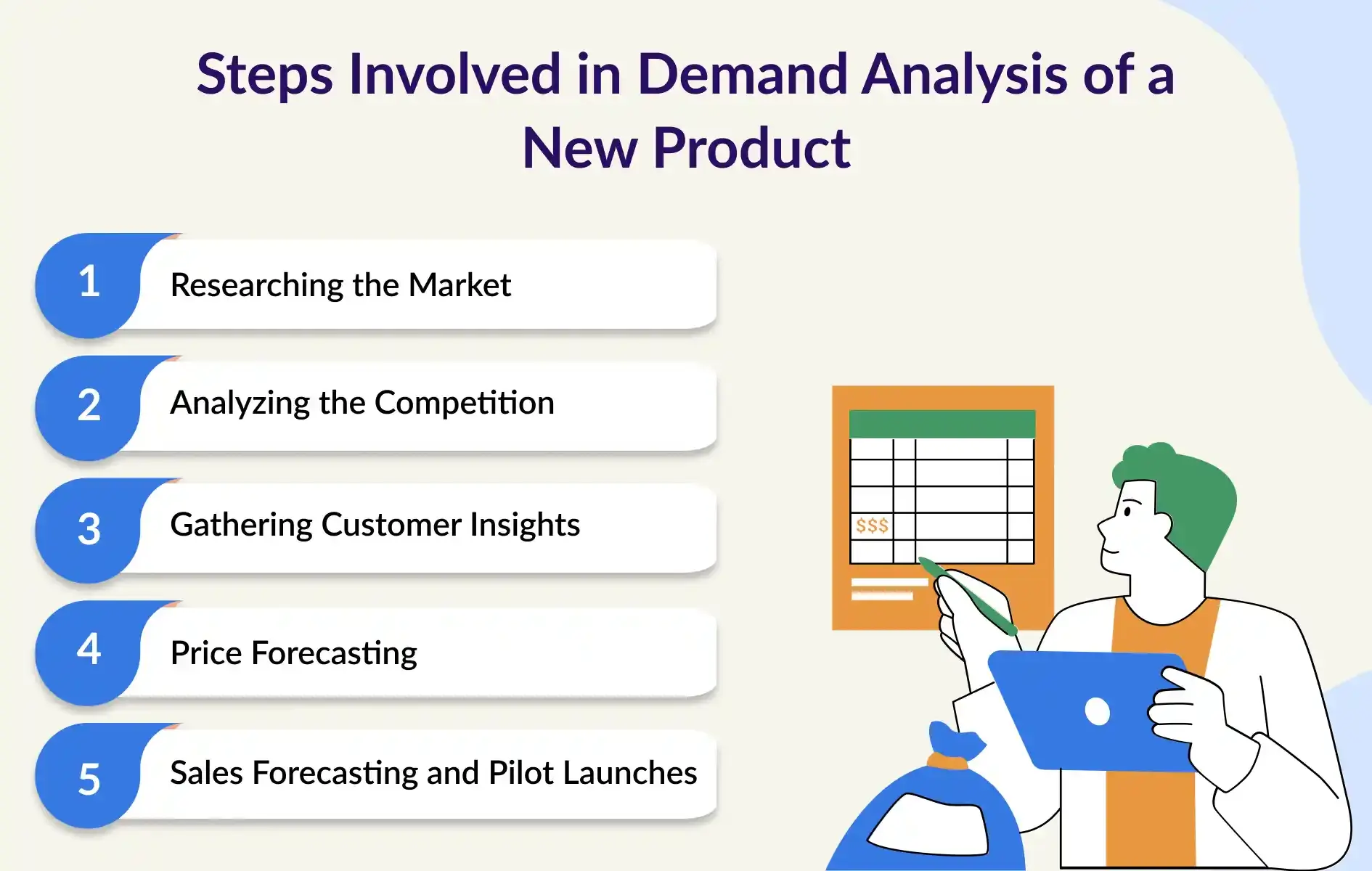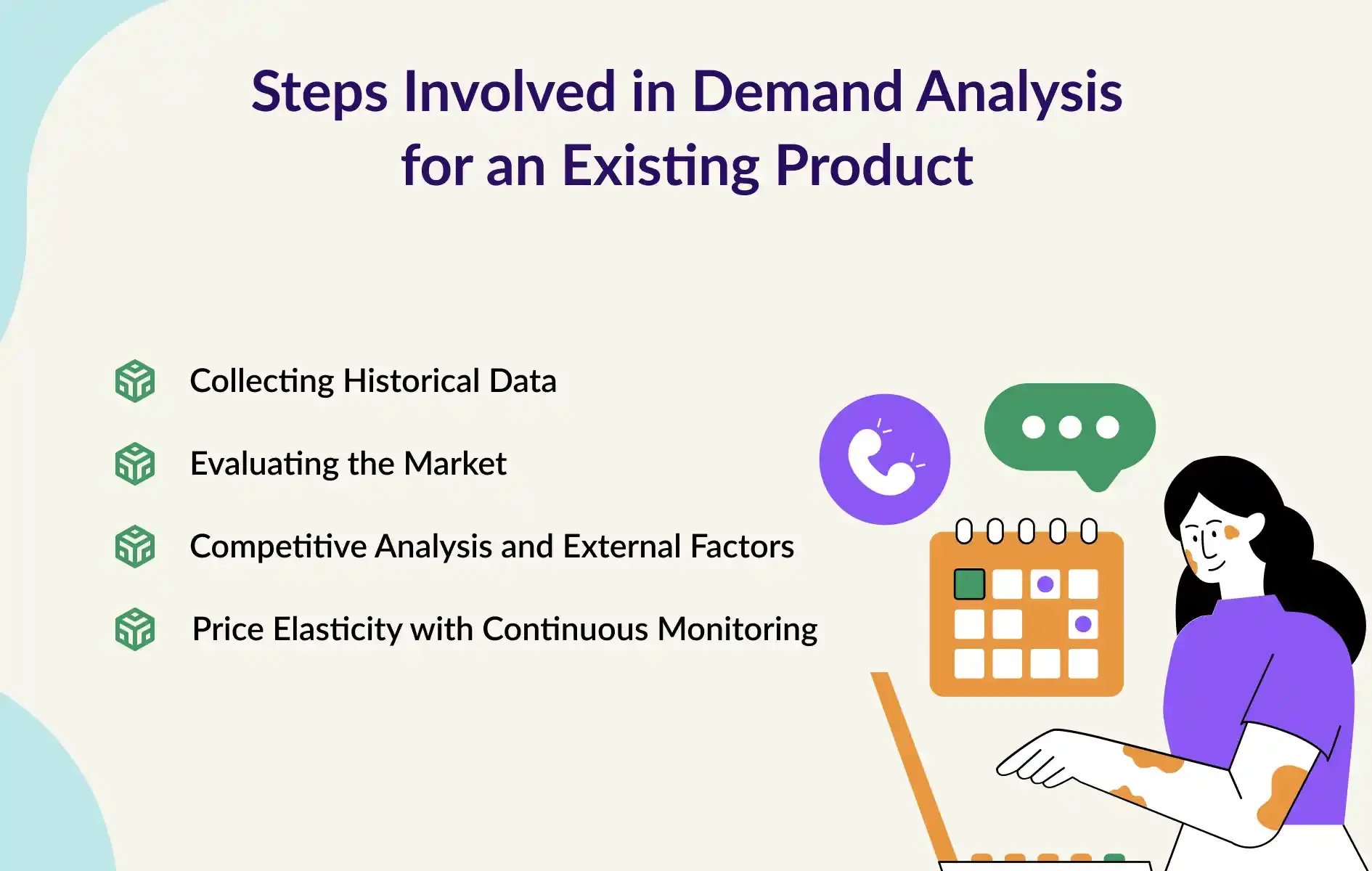How To Do Product Demand Analysis In Easy Steps | thouSense

With businesses experimenting with different products and services in the last few years, it is crucial to understand the workings of a market. Demand analysis is one of the key factors that drive a successful business.
Demand analysis of a product that is launched into the market is crucial to understand its highs and lows. This guides businesses to understand the flow of market and consumer demands in depth.
With several methods of demand forecasting available, businesses can choose the best from a wide variety of demand forecasting tools. Several methods hogging the market, a business can design its fool-proof supply chain through the steps below.
Understanding Product Demand Analysis
Estimating future sales and keeping a budget analyzed for businesses has become crucial.
Product demand forecasting helps in understanding different aspects of the market like competition from rival products, consumer behavior, and seasonal demands of certain services.
Demand analysis not only works for the products already in the market but also helps in finding out the scope of products that are being planned to be launched. Prior sales and data of the market found through the support of demand forecasting tools can predict how a product will work when it actually launches.
Weighing in several factors through the support of demand analysis helps companies analyze the gaps in their businesses. Such methods can provide you with a competitive advantage and might help you in bridging the gap in your business.
Benefits of Product Demand Analysis
One of the primary factors of driving a product demand analysis is to analyze the performance of a certain product or service in the market. Although, demand forecasting provides so much more to businesses and the markets than just analysis.
Some of the major benefits included through the support of demand analysis are:

● Market Determination: Demand forecasting provides an overall outlook of the market. The demand for a certain product or service along with the competitor’s sales, purchasing behavior of consumers, and pricing strategies to follow.
● Supporting the Ideas: Every now and then a new product is introduced in the market, and extensive research is conducted. Demand analysis helps in researching the market’s needs and supports the analysis of such new ideas.
● Setting a Budget: Building any product requires procurement of raw materials. Demand forecasting tool helps businesses analyze the budget that might be required to build a product from scratch and the ROI it might generate.
● Price Elasticity: Setting a price strategy is important for businesses. It allows companies to manipulate the prices of a product depending on how the market is functioning.
Demand sensitivity comes into a role while understanding how small changes in the prices of a product can bring a shift to consumer behaviors.
Product demand analysis proves to be a very crucial aspect of aligning business strategies with the realities of the market.
Ultimately, to enhance competitiveness and profitability, businesses can follow different product demand analysis to rise up ahead.
Demand Analysis of a New Product
Demand analysis for any new product that you are planning to launch in the industry might be difficult due to lack of historical data. However, demand forecasting of those products by understanding their market potential and demands can provide you with an analysis.
Understanding how well this new product might work among consumers is necessary for generating a profit. Hence, demand analysis of a new product is necessary through certain steps.

1. Researching the Market
Businesses should carry out extensive market research while launching any new product. Demand forecasting tools like thouSense.ai can help you identify target customers and markets for new products.
Along with identifying target markets, one can also understand the demographics and psychographics like consumer behavior.
Moreover, understanding the current trends in the market is also necessary to remain valid with new products.
2. Analyzing the Competition
While carrying out demand forecasting methods, analyzing the competition is most important. Businesses should jot down aspects like the features and benefits of their competitors' products to provide something equally good or better to the market.
One should also consider factors like the brand that is dominating the market in that segment while trying to set a price for one’s own product.
Businesses can do justification to any new product that is being introduced in the market while ensuring that they meet the basic standards against their competitors.
3. Gathering Customer Insights
Since there is no past data available for launching a new product, customer feedback provides the collection of some data. Testing and understanding reactions of consumers to your products through the support of surveys and focus groups can be made.
Providing prototypes or miniature products to people for feedback can be made to generate data or reactions. These data and reactions can allow you to gather information about your product to make changes and upgrades.
4. Price Forecasting
Taking support of methods like conjoint analysis helps you determine the price and value of different products. They analyze the attributes of the product to determine if the price does justify the product or not.
Carrying out price sensitivity surveys through the support of demand forecasting tools can also turn out to be helpful. It helps in determining businesses about the range of price consumers are willing to pay for a certain product.
5. Sales Forecasting and Pilot Launches
Before launching any product into the market, one should analyze its scope in the market. Creating a model supported by machine learning can help you generate statistics that provide an outlook on factors like market size and different sales scenarios.
Demand forecasting can also allow you to understand different economic factors that might influence the sales of a certain product. With new innovations present every now and then, businesses can analyze their product’s viability.
Demand Analysis for an Existing Product
Existing products that have already made a presence in the market provide a historical set of data that is missing with the new products.
Demand forecasting of existing products from time to time allows businesses to analyze the performance of their product with an assessment of the market performance.
To carry out an extensive analysis of an existing product in the market, one can follow certain steps.

1. Collecting Historical Data
Since an existing product might be in the market for a while, businesses can analyze the data it has collected through its performance. Brands can get information about the volume sold with sales generated.
Brands can also get information about the regions where it has been sold the most with a consumer's reaction to it. Such data can help in estimating the new methods that have to be carried out to enhance a particular product’s performance in the market.
2. Evaluating the Market
Brands have to evaluate the demand patterns that have been running since the launching of a certain product. It helps in the analysis of momentary sales made throughout a time period with economic fluctuations.
People can also interpret how a certain product behaves during a particular season or period such that better promotional strategies can be implemented.
3. Competitive Analysis and External Factors
Whether a product is new or existing in the market, analyzing the competitive environment of the market is crucial for one’s success.
How a product is functioning in competition with your product allows you to bring changes that can lead to better profitability.
Different external factors such as economical and technological changes contribute to the sales of a certain product. Assessing external factors while comparing your prices to competitors can bring out the best results.
4. Price Elasticity with Continuous Monitoring
Brands should definitely assess how a product’s sales might vary with changing differences in the price. Seeing how consumers respond to price changes tells a lot about the product performance.
Moreover, keeping a constant check on how your product performs periodically provides you with an in-depth understanding of how the market is responding to your products.
Keeping a check of your product’s performance also helps in manipulating better sales strategies.
However, such demand forecasting methods can be supported through better technologies that drive better business results. The presence of software supported with artificial intelligence and machine learning like thouSense can bring out enhanced product performances with better revenue generation.
Conclusion
Demand analysis is a crucial method for businesses to drive information about their products. Whether it is a new service or an existing one, understanding the market regularly brings out the best results. Taking support of the new technologies can provide businesses with success and better performance results.
FAQs
Q1. Is demand forecasting actually important?
Yes, demand forecasting plays a crucial role in deriving the best market results. It tells businesses about the possible working of a certain product or service.
Q2. What are some common mistakes carried out in demand analysis?
Some of the most common mistakes that companies make are underestimating external factors like a region’s economy and relying on past data sources. These factors lead to major errors that ultimately become the reason for the failure of a product.